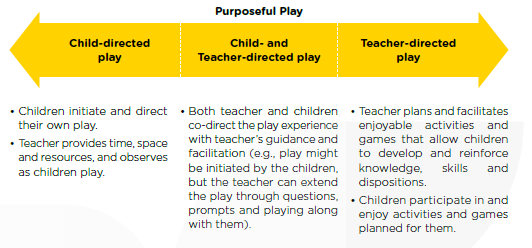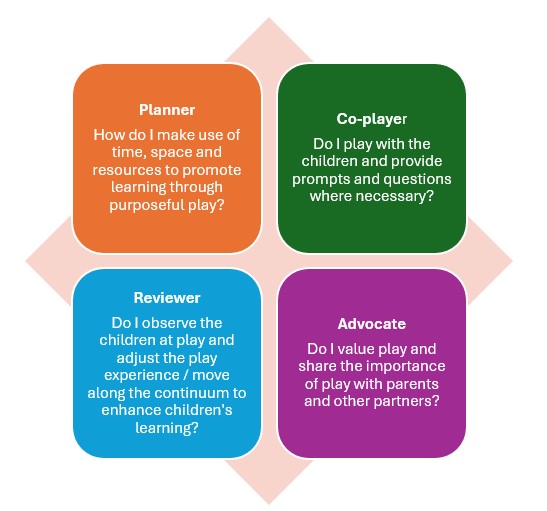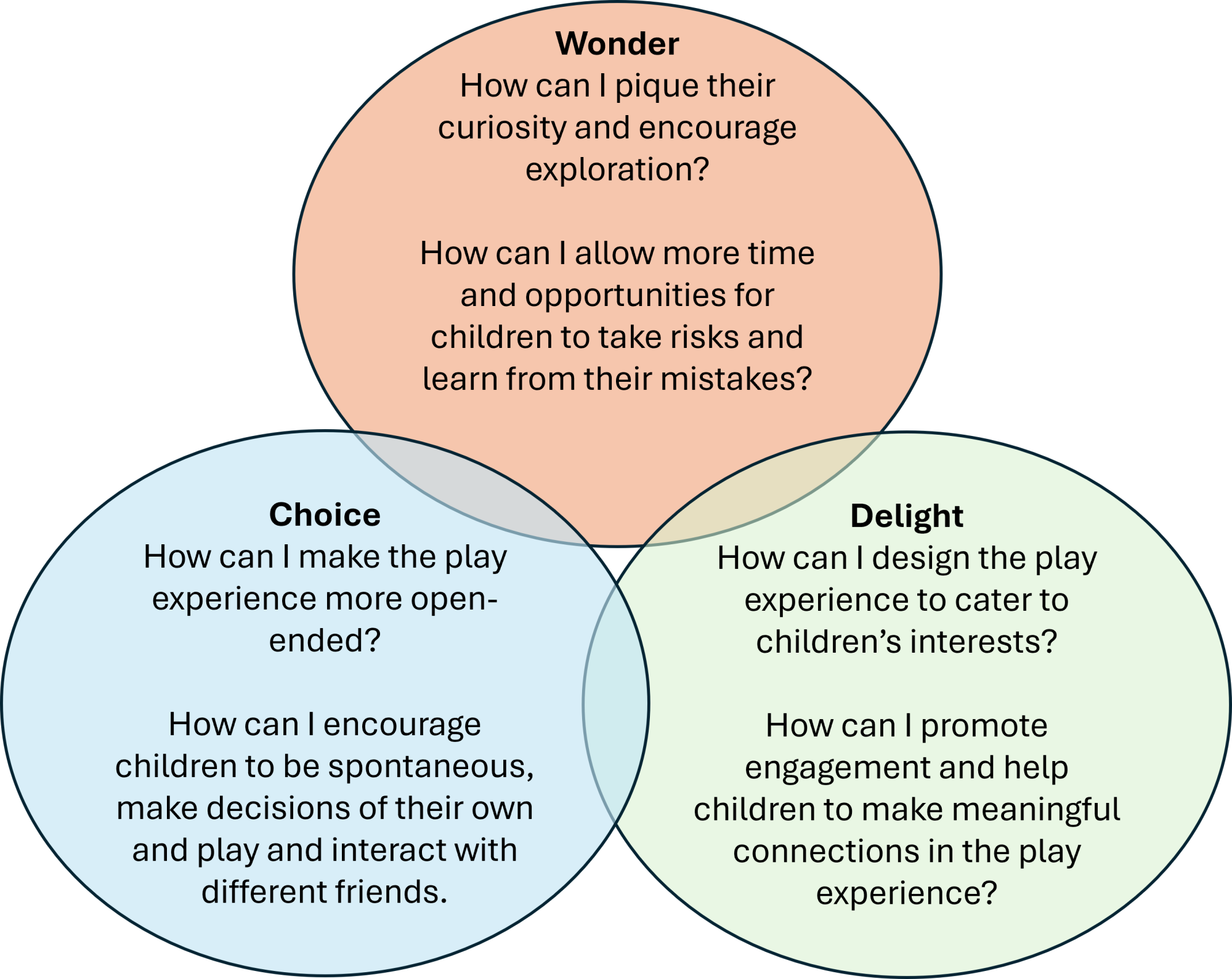Home >
Nurturing Early Learners >
iTeach Principles >
Engaging children in learning through purposeful play
Engaging children in learning through purposeful play
Engaging children in learning through purposeful play
Play is a primary way through which children explore their immediate environment and gain essential knowledge and skills. When you take on an intentional role in promoting and guiding children’s play experiences, it becomes “purposeful play” which is both enjoyable and meaningful to children.
Purposeful play can range from being more spontaneous and child-directed, to being more structured and teacher-directed as shown in the purposeful play continuum below. Depending on the learning intent or context, there is a place for all the different types of play experiences that lie on the continuum.

All play experiences along the play continuum should include the elements of "wonder", "choice" and "delight" to foster enjoyment, curiosity, exploration and decision-making.
What are the benefits?
- Enjoyable and Meaningful Experiences: Purposeful play prioritises creating enjoyable and meaningful play experiences that spark children's curiosity, engage their interest, and develops their imagination and creativity. This motivates children to actively participate and learn, making the experience more impactful and memorable.
- Sense of Wonder and Autonomy: Purposeful play fosters a sense of wonder and promotes children’s autonomy. By providing opportunities for exploration, experimentation, creation and discovery, children develop a sense of curiosity, learn to take risks, make decisions and are empowered to take ownership of their learning.
- Learning and Development: Purposeful play provides a context for children to develop and practise concepts and skills across all developmental domains, including social, emotional, cognitive and motor competencies.
How can you do it?
You play a crucial role in deciding how the play experiences you provide can move along the continuum of purposeful play to promote children’s autonomy and facilitate their progress towards achieving desired learning goals.
You will also take on different roles (planner, co-player, reviewer and advocate) to engage in play alongside the children and facilitate their play across the purposeful play continuum.
Reflecting on my roles in facilitating learning through purposeful play:
 |
Here are some ideas for the different types of purposeful play experiences:
Child-directed play
- Provide time and space for children to explore with different materials and to initiate play
- Provide a variety of open-ended materials such as blocks, art supplies and recycled materials
- Allow children to choose and decide what and how they would like to play
- Observe and document what children say and do during their play and find out what they are interested in. This can inform the planning of subsequent activities or opportunities to extend children’s learning experiences
Child- and teacher-directed play
- Collaborate with children to plan and set up play experiences together
- Ask questions, provide prompts or add/remove resources as you play with the children to extend their play ideas, clarify their thinking and to promote problem solving
- Incorporate children’s ideas into the play
Teacher-directed play
- Introduce or reinforce specific learning objectives or concepts through enjoyable play activities that align with learning goals and reinforces knowledge, skills and dispositions
- Plan and carry out structured but enjoyable play experiences, activities or games that promote children’s choice and sense of wonder
- Provide clear instructions and support them as engage in the play activity
Here are some considerations when engaging children learning through in purposeful play:

- How can I incorporate the elements of "wonder", "choice" and "delight" in the children's play experiences?
- What resources should I provide and how can the learning environment contribute to promoting the three elements?

